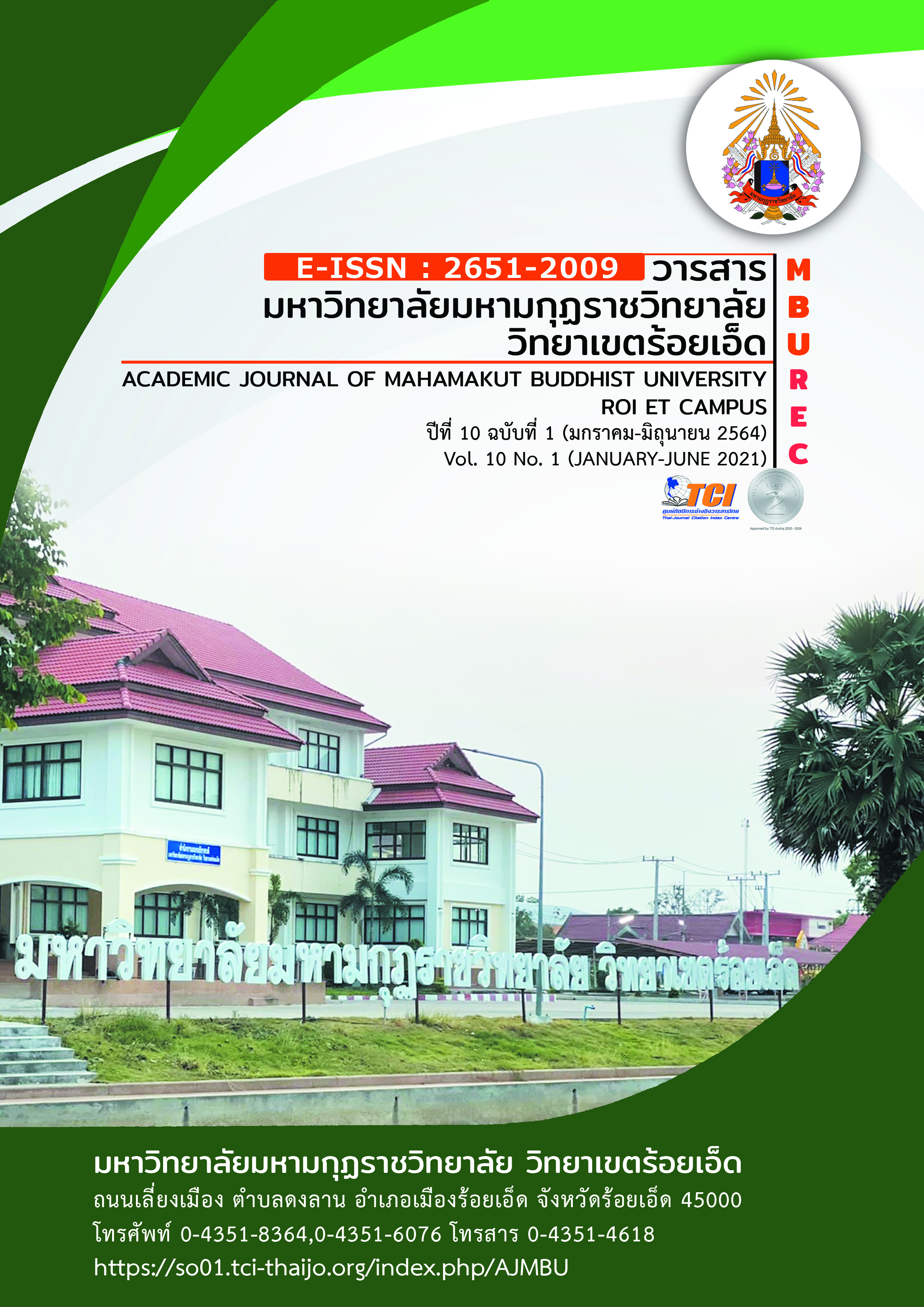The Development of English Pronunciation Learning Strategies of Second Years Communication Arts Students of Sripatum University Khon Kaen Campus
Main Article Content
Abstract
The objectives of the research article were 1) to compare the English reading ability of students, before and after practicing English pronunciation with video materials of second-year students of the Communication Arts Faculty, Sripatum University Khon Kaen Campus. 2) to improve their English pronunciation correctly according to International Phonetic Alphabet (IPA). The sample used in this research was the 2nd year students, total 20 people, from the Faculty of Communication Arts, Sripatum University, Khon Kaen Campus. The research tool was an English-speaking test (before - after class) and a satisfaction questionnaire. The statistics used in the analysis were percentage, mean and standard deviation. Data was collected by making 15 videos for teaching in the classroom. The students' pronunciation test of 20 words was one set of pronunciation practice test. The data was collected two times using the same test; the researcher began collecting data by pre-test for the second-year students of the Communication Arts Faculty, the number of words was 20 words, then the researcher performed the post-test after students watched the video in the final week.
The results of the research were as follows: 1) the post-test scores of the 20 students who took the test were higher before studying. The pre-test had a mean of 3.30, a standard deviation of 2.03, and a post-test with a mean of 17.65, a standard deviation of 1.39. 2) the students were satisfied with the Pronunciation and Vocabulary Video by a mean of 4.06 and a standard deviation of 0.79. The pre-test scores showed that some students did not have a basic knowledge of English pronunciation or have some knowledge but lack the skills of word stress. After the students had learned and practiced the pronunciation from the videos, they gained knowledge of English pronunciation and was able to pronounce the words correctly. This resulted in higher marks in the test after studying.
Article Details
References
ปวีณนุช พุ่มจิต และอังค์วรา เหลืองนภา. (2562). การใช้แอปพลิเคชันในการพัฒนาทักษะภาษาอังกฤษด้านการฟัง. การประชุมวิชาการนำเสนอผลงานวิจัยระดับชาติของนักศึกษาด้านมนุษย์ศาสตร์และสังคมศาสตร์ ครั้งที่ 2. วันที่ 19 มกราคม 2562 ณ คณะมนุษยศาสตร์และสังคมศาสตร์ มหาวิทยาลัยราชภัฏสวนสุนันทา. 550-561.
พัชราภรณ์ ห่อตระกูล และ สุพจน์ แก้วไพฑูรย์. (2561). การพัฒนาผลสัมฤทธิ์การออกเสียงภาษาอังกฤษของนิสิต สาขาวิชาภาษาอังกฤษ มหาวิทยาลัยมหาจุฬาลงกรณ์ราชวิทยาลัย วิทยาเขตแพร่. วารสารบัณฑิตศึกษาปริทรรศน์ มจร. วิทยาเขตแพร่. 1(1). 39-48.
พิณทิพย์ ทวยเจริญ. (2544). การพูดภาษาอังกฤษตามหลักภาษาศาสตร์. กรุงเทพมหานคร : สำนักพิมพ์มหาวิทยาลัยธรรมศาสตร์.
มณีรัตน์ กรรณิกา และ อภิราดี จันทร์แสง. (2560). การพัฒนาทักษะการฟังภาษาอังกฤษโดยใช้รายการโทรทัศน์ของนักเรียนชั้นมัธยมศึกษาปีที่ 3. วารสารมหาวิทยาลัยราชภัฏร้อยเอ็ด. 11(2). 127-133.
รุสลาน สาแม และเปรมินทร์ คาระวี (2558). พฤติกรรมการออกเสียงพยางค์หนัก-เบาในคำภาษาอังกฤษจากผลของการสอนแบบฟัง-พูดร่วมกับการสอนความรู้ทางสัทศาสตร์: การศึกษานักเรียนชั้นมัธยมศึกษาปีที่ 4 โรงเรียนศิริราษฎร์สามัคคี อำเภอมายอ จังหวัดปัตตานี. วารสารศึกษาศาสตร์ มหาวิทยาลัยสงขลานครินทร์. 26(1). 85-89.
Ur,P. (2000). A Course in Language Teaching Practice and Theory: Teaching Pronunciation. United Kingdom : Cambridge University Press.


